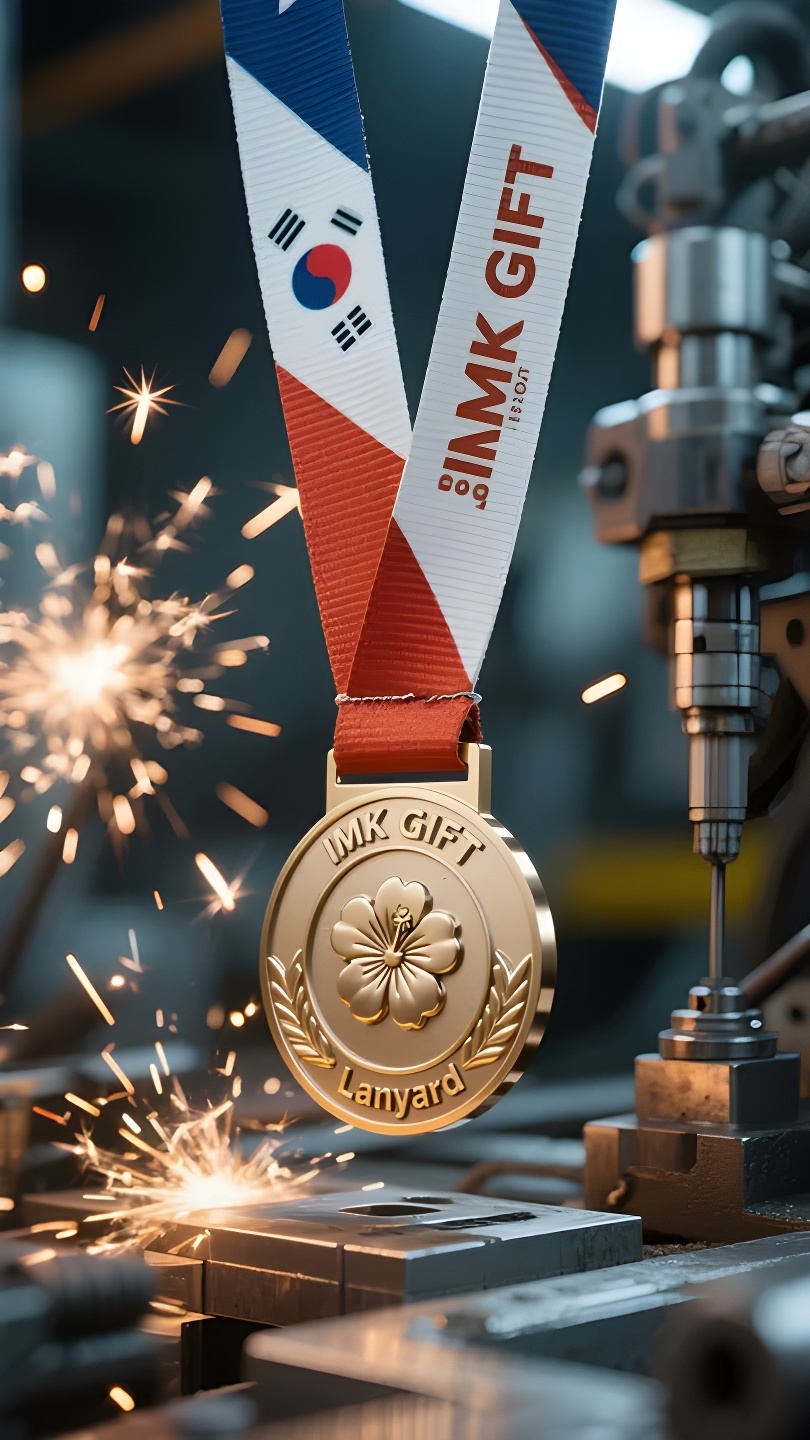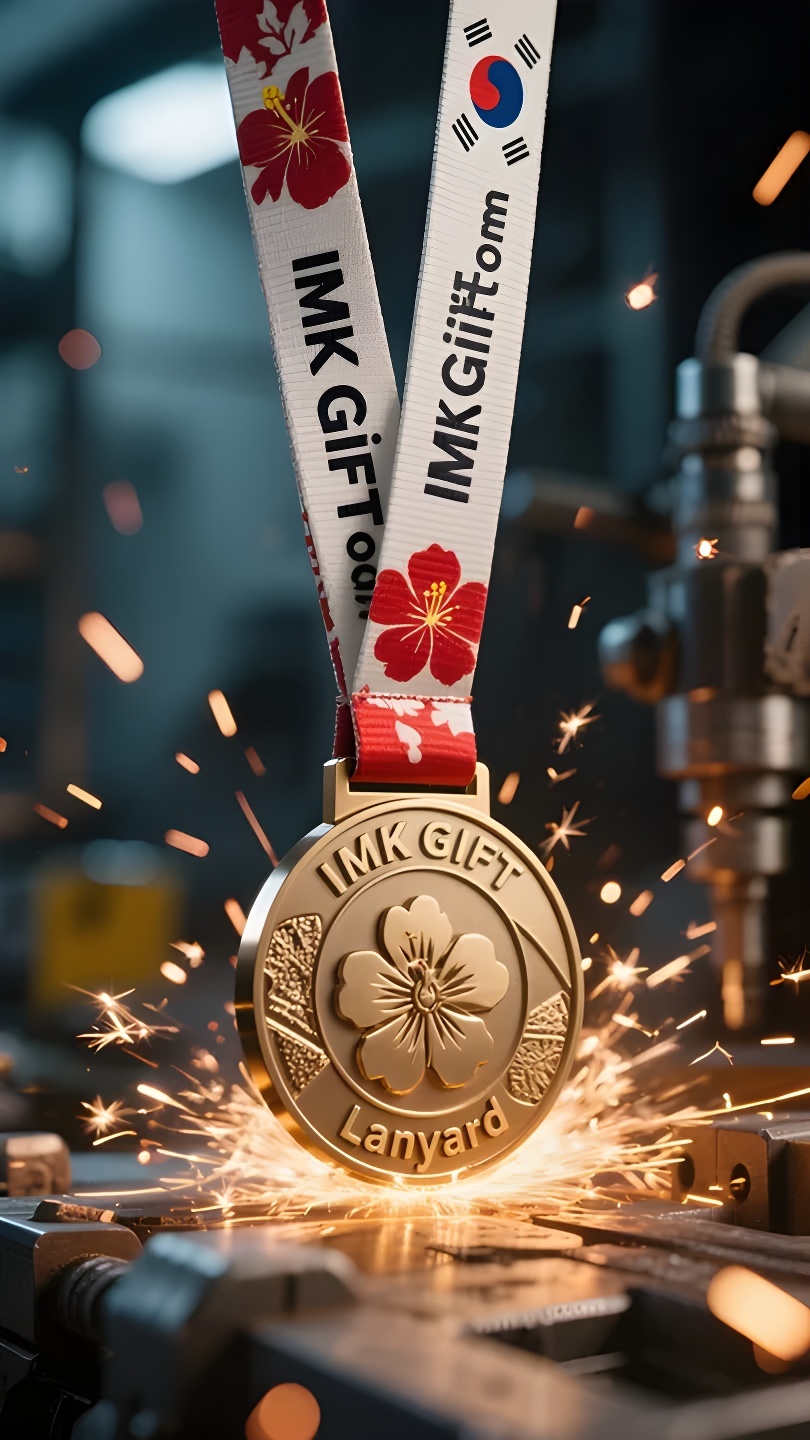in996-결코-시들지-않는-영광-히비스커스-꽃-목걸이에-담긴-국민-정신
▼
광복 78주년을 맞아, 태극기를 기념하는 행사에서 가장 감동적인 문화적 상징이 된 것은 바로 목걸이에 달린 무궁화 메달입니다. 국기의 파란색과 빨간색으로 수놓은 이 목걸이는 메달 그 자체를 넘어 더 깊은 의미를 담고 있습니다. 태극기 중앙의 음양 조화와 무궁화의 다섯 꽃잎 모양은 메달에서 서로 보완됩니다. 이 목걸이는 전통적인 모시 직조 기술을 사용했으며, 각 비단실은 여러 세대의 투쟁 궤적을 상징하며, 끈질긴 민족적 유대감을 형성합니다. 착용자는 이 천에 담긴 따스함을 느낄 수 있습니다. 삼천 리의 산과 강이 키운 단결의 의지이자, 비바람과 서리에도 여전히 당당하게 피어나는 민족의 자존심입니다. “아침에 피고 저녁에 지지만 날마다 새롭게 태어나는” 무궁화 꽃의 특징은 지난 백 년 동안 한국이 부흥하는 길과 같습니다. 이 끈의 독특한 매듭 기술은 신비로움을 감추고 있습니다. 머리부터 꼬리까지 이어지는 땋은 구조는 전통과 현대성의 지속 가능한 계승을 의미합니다. 일곱 가지 매듭은 인(仁), 의(義), 예(禮), 지(智), 신(信), 충(忠), 효(孝)의 일곱 가지 덕목에 대응하며, 동양 철학을 현대적인 경쟁 정신에 접목합니다. 우승자들이 가슴에 단 무궁화 꽃 끈을 내려다볼 때, 그들은 자신의 영광뿐 아니라 역사의 긴 강물 속에서 단련된 온 민족의 생명력을 봅니다. 이 흐르는 토템은 진정한 승리는 한순간에 꽃피는 것이 아니라, 비바람 속에서도 무궁화처럼 똑바로 서는 것임을, 그리고 시대의 흐름 속에서도 민족의 정신이 항상 새롭게 살아갈 수 있도록 하는 것임을 일깨워줍니다.
On the 78th anniversary of Korea’s Liberation Day, the hibiscus flower medal on a lanyard became the most moving cultural symbol in the celebration of the Taegeukgi flag. This lanyard, woven with the blue and red colors of the national flag, carries a deeper meaning beyond the medal itself. The yin and yang harmony in the center of the Taegeukgi flag and the five-petal shape of the hibiscus flower complement each other on the medal. The lanyard uses traditional ramie weaving technology, and each silk thread symbolizes the struggle trajectory of different generations, weaving into a tenacious national bond. The wearer can touch the warmth contained in the fabric – it is the will of unity nurtured by the three thousand miles of mountains and rivers, and the national integrity that still blooms proudly after wind and frost. The characteristics of the hibiscus flower “blooming in the morning and falling in the evening, but reborn every day” are just like the road to Korea’s revival in the past hundred years. The unique knotting craftsmanship of the lanyard hides a mystery: the braided structure connected head to tail implies the sustainable inheritance of tradition and modernity; the seven groups of knots correspond to the seven virtues (benevolence, righteousness, courtesy, wisdom, faith, loyalty, and filial piety), integrating Eastern philosophy into the modern competitive spirit. When the winners look down at the hibiscus flower lanyard on their chests, they see not only their personal glory, but also the life force of the entire nation tempered in the long river of history. This flowing totem reminds us that true victory does not lie in blooming in an instant, but in standing upright like hibiscus in the wind and rain, so that the national spirit will always be fresh in the tide of the times.
在韩国光复节78周年之际,太极旗飘扬的庆典中,木槿花挂绳奖牌成为最动人的文化符号。这枚以国旗蓝红两色编织的挂绳,承载着超越奖牌本身的深层寓意。
太极旗中央的阴阳圆融,与木槿花的五瓣造型在奖牌上交相辉映。挂绳采用传统苎麻编织工艺,每根丝线象征不同世代的奋斗轨迹,编结成坚韧的民族纽带。佩戴者能触摸到织物里蕴含的温度——那是三千里山河孕育的团结意志,是历经风霜仍傲然绽放的民族气节。
木槿花”朝开暮落却日日新生”的特性,恰如韩国在近代百年中的复兴之路。挂绳特有的绳结工艺暗藏玄机:首尾相连的编织结构,暗示着传统与现代的永续传承;七组绳结对应七德(仁、义、礼、智、信、忠、孝),将东方哲学融入现代竞技精神。
当获奖者低头凝视胸前的木槿花挂绳,看到的不仅是个人荣光,更是整个民族在历史长河中淬炼出的生命力量。这枚流动的图腾提醒我们:真正的胜利不在于瞬间绽放,而在于如木槿般在风雨中保持挺立的姿态,让民族精神在时代浪潮中永远鲜活。
▼
Contact Us
📞 Tel: +0086-760-85286839
📧 Email: sales3@imkgift.com








